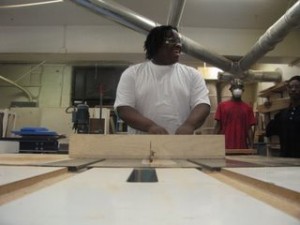Woodzone’s Shop Tips, Tricks and Jigs
 Buying new tools and purchased accessories is great. They can give you increased capability, improved assembly and flawless finishing results.
Buying new tools and purchased accessories is great. They can give you increased capability, improved assembly and flawless finishing results.
However, with the stock market tumbling, the threat of layoffs looming and pay freezes across many companies, woodworkers need to find ways to get more out of the tools they own.
That’s what makes Woodzone’s Shop Tips, Tricks and Jigs page so sweet. These free gems of advice can help make your power and hand tools more productive, prevent wasting of valuable hardwood and lead you to an outstanding finished piece.
These tips can apply to beginner, intermediate and advanced woodworkers. A must see…

 One thing I have never built in my decade as a woodworker is a chair. Sure, I’ve built lots of stuff in my shop, but the challenge of chair building has always stopped me cold in my tracks.
One thing I have never built in my decade as a woodworker is a chair. Sure, I’ve built lots of stuff in my shop, but the challenge of chair building has always stopped me cold in my tracks. Where should you put your table saw? Would the band saw work better in one corner of your shop or another? Do you have enough room to build that miter saw bench along the back wall?
Where should you put your table saw? Would the band saw work better in one corner of your shop or another? Do you have enough room to build that miter saw bench along the back wall?
 The pocket screw has proven to be a fast and convenient way to build case construction. From face frames to box assembly, this system gives very good results in short order.
The pocket screw has proven to be a fast and convenient way to build case construction. From face frames to box assembly, this system gives very good results in short order. Exotic woods are some of the most beautiful timbers in the world. There presence in a woodworking project can take the most ordinary piece and turn it into a work of art.
Exotic woods are some of the most beautiful timbers in the world. There presence in a woodworking project can take the most ordinary piece and turn it into a work of art.